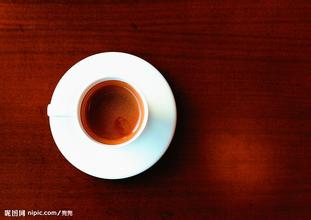An introduction to the Historical Origin of espresso in China
The history of espresso
The production of espresso is at the peak of all coffee-making methods, which can maximize the aroma of coffee, leaving excess acid, caffeine, etc., which are done by pressurization. However, outside Italy, there has never been a standard to examine this approach. The whole world knows how to buy these wonderful machines, but they know nothing about their potential. If you do it very carefully, espresso tastes as good as coffee powder smells, maybe even better. The best state is honey-like consistency, combined with unusual aroma and texture. But this pursuit is difficult to master.
As the singer sings, elegant people travel all over the world, looking for their true love, the purest and finest rare things in the world. Well, let's add an item to it. You search the world for a good cup of espresso. Maybe you are old when you find it, maybe this cup of coffee is the last song of your life, but you have been blessed by the god of luck, you are the happiest person in the world.
Characteristics of Italian espresso
The most important sign of a good espresso is that it has a light camel-colored emulsion (Crema), which is a mixture of fat, water and air in the coffee during the extraction process. The emulsion should be uniform in color, about 3 cm to 5 cm thick, shake the coffee cup gently, and this layer of emulsion will stick to the wall like thick syrup. If the emulsion is dark brown or even black, the coffee is overextracted; if it is yellowish, the coffee has not been fully extracted. In the 1930s, an Italian named Gurgia invented a machine for brewing espresso. He also invented this chic method of brewing coffee, which allows hot water to pass through the coffee powder under great pressure. Due to the use of the name "espresso", espresso is often considered to be caffeinated coffee, so people worry that this kind of coffee is harmful to health. But in fact, due to the long roasting process, coffee beans have lost many irritating ingredients, and after a short period of water, it is impossible to dissolve all the caffeine in coffee, so Espresso can be said to be more harmless than ordinary coffee.

Important Notice :
前街咖啡 FrontStreet Coffee has moved to new addredd:
FrontStreet Coffee Address: 315,Donghua East Road,GuangZhou
Tel:020 38364473
- Prev

Italian espresso taste practice-introduction of Italian coffee machine brand
Italian espresso taste in Italy, the birthplace of espresso, the research on it has developed into a discipline. In the mid-1950s, espresso spread to the United States, first appearing in Italian-populated areas of larger cities. The second place to accept espresso is the cafe that people often go to. Since then, the production techniques and skills of espresso have been developed.
- Next

Structure diagram of Fuji coffee roaster-Starbucks Italian roasted coffee beans
Fuji coffee roaster structure chart from the coffee history in Japan, we can see that there are many coffee professionals in Japan who pursue the perfect taste of coffee. These coffee professionals experiment by proposing a variety of baking methods, and design and manufacture a lot of special personalized roasters according to their various baking requirements, because these special roasters have a special personality.
Related
- Beginners will see the "Coffee pull flower" guide!
- What is the difference between ice blog purified milk and ordinary milk coffee?
- Why is the Philippines the largest producer of crops in Liberia?
- For coffee extraction, should the fine powder be retained?
- How does extracted espresso fill pressed powder? How much strength does it take to press the powder?
- How to make jasmine cold extract coffee? Is the jasmine + latte good?
- Will this little toy really make the coffee taste better? How does Lily Drip affect coffee extraction?
- Will the action of slapping the filter cup also affect coffee extraction?
- What's the difference between powder-to-water ratio and powder-to-liquid ratio?
- What is the Ethiopian local species? What does it have to do with Heirloom native species?

